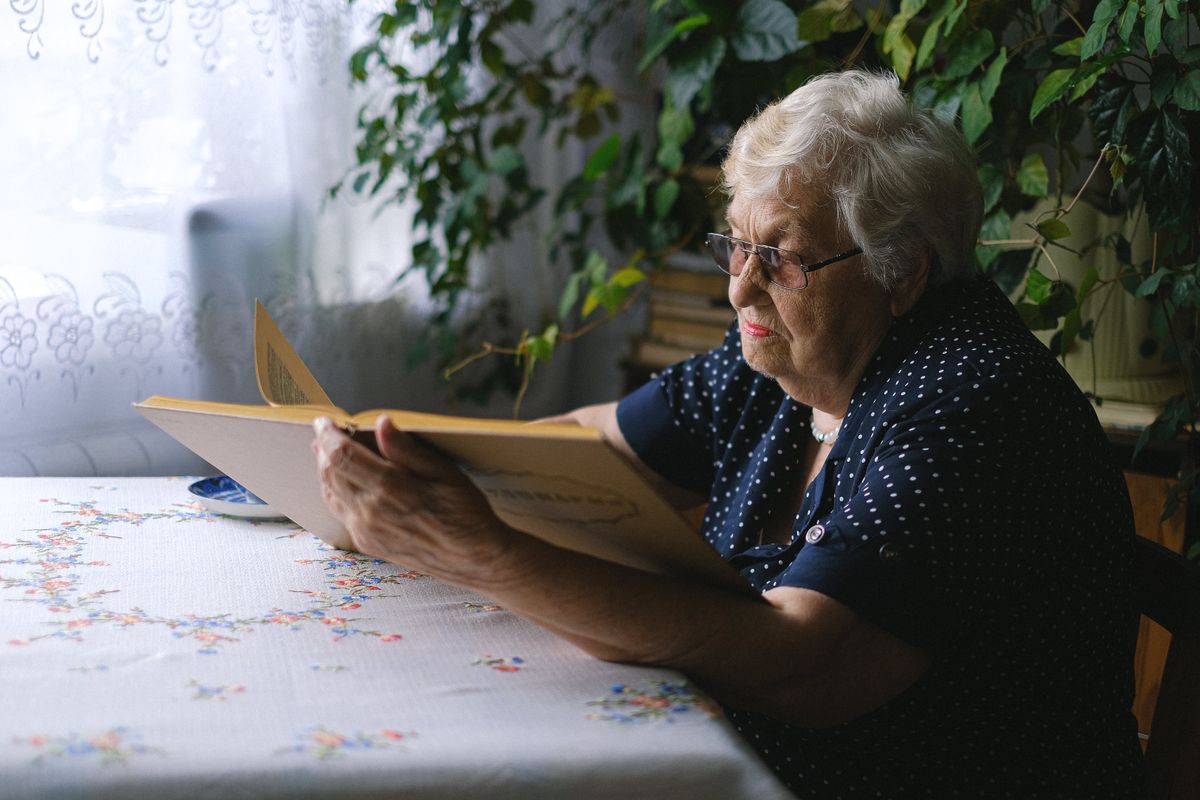Private Pay for Home Care: How to Make it Work
If you or a loved one is looking to age in place and wondering how to cover the costs, chances are you're feeling pretty overwhelmed. Luckily, Seniorly's got everything you need to know about private pay home care options.

Ask any older adult where they see themselves in ten years, and the majority will tell you they want to be in their own home. Indeed, according to a study conducted by AARP, over 75% of adults aged 50 and above want to "age in place" - the term used for staying in one's home as one gets older. The drive to stay in familiar surroundings is often fueled by the emotional attachment to home, the community of neighbors, friends and others, and the preservation of independence.
Yet there are often very real costs associated with making home a healthy and safe place to support a positive aging experience. From installing grab bars or ramps, to bringing in companion or other non-medical home care for a little extra help, extra costs can add up.
Navigating the costs associated with aging in place becomes a critical aspect of empowering older adults - and their families - to maintain their desired lifestyle while ensuring their safety and well-being. To fund private pay home care, you'll need a little creativity and a whole lot of knowledge.
What is private pay home care?

Private pay home care refers to personalized and often non-medical assistance provided to individuals within the comfort of their home, with services being financed directly by the individuals or their families. Private pay services are distinct from publicly funded or insurance-covered services, as it is funded by individuals themselves - "out of pocket."
Private pay home care typically encompasses a range of senior care and support, including help with activities of daily living (ADL) such as bathing, dressing, and mobility, as well as independent activities of daily living (IADL), like housekeeping, meal preparation, and transportation. Generally speaking, most of these services are flexible and offered in an "a la carte" fashion, based on the needs of each person.
The benefits of aging in place

Aging in place, the desire for older adults to remain in their own homes as they grow older, is motivated by a range of compelling factors that contribute to a sense of comfort, security, and overall well-being.
- Established support networks: Aging in place allows individuals to maintain robust local networks of friends, family, and support systems. These connections play a crucial role in providing emotional and practical assistance, contributing to a sense of belonging and security.
- Emotional attachment to home: Many older adults have nurtured a deep emotional connection to their homes, spaces adorned with memories, love, and personal history. The familiarity of one's living environment fosters a profound sense of comfort and identity.
- Familiarity with the neighborhood: Remaining in the same neighborhood means retaining ties to local surroundings, easy access to social activities, shopping, medical facilities, and community events. This familiarity enhances a person's ability to navigate their environment independently.
- Preservation of independence: Aging in place supports the preservation of independence, a crucial aspect of mental health for older adults. Being able to manage daily activities and make decisions independently contributes to a positive self-image and a sense of autonomy.
A note from Seniorly about socialization
While we love the idea of aging in place, we do have concerns about the degree of socialization many older adults experience as they age at home. Data from the 2023 Poll on Healthy Aging reports that one third of adults over the age of 50 reported feeling lonely. In comparison, the same study showed lower rates of loneliness among those who lived in assisted living or other group settings. So while there's a lot to be said for the new era of support services that allow people to stay at home longer, it's important to consider both physical and mental health when deciding the right environment. In many cases, aging outcomes may actually be better in structured senior living environments.
Private pay services for older adults at home

Opting to age in place means relying on services that can be easily delivered within the home, so older adults can receive the support they need without compromising their comfort or independence. In general, there are a few different categories of support that need to be funded:
- In-home care services: Tailored to the specific needs of older adults, personal care services encompass non-medical assistance for daily living activities (ADL) like bathing, dressing, and mobility. Additionally, support for independent activities of daily living (IADL), such as grocery shopping, meal preparation, and managing finances, is provided within the familiar confines of the home. These services are instrumental in maintaining a comfortable and functional living environment, and are most often funded by private pay solutions.
- Safety modifications: Addressing safety concerns directly within the home is key to enabling older adults to age in place. Typical modifications include installing features like shower bars, motion-sensor lights, lever door handles, and ramps. These adjustments not only prevent accidents but also ensure the home remains a secure space for individuals with varying levels of mobility and strength.
- Healthcare at home: Coordinated healthcare services are brought to the doorstep, encompassing regular check-ups, medication management, and collaboration with healthcare professionals. By providing healthcare within the home, this service allows private pay clients to manage their health effectively and receive necessary medical attention without the need for external visits.
- Home-based rehabilitation: For those in need of rehabilitation or physical therapy, private pay, home-based services offer personalized care within the familiar environment. This facilitates a smoother recovery process, with professionals guiding individuals through exercises and treatments designed to improve mobility and overall well-being.
Payment options for at-home care

Securing funding for in-home services is crucial for older adults opting to age in place. Understanding the various financial options to support a private duty caregiver allows older adults to access crucial support services while maintaining financial stability within their homes.
Reverse mortgage
A popular choice for private pay involves tapping into home equity through reverse mortgages. This allows homeowners aged 62 and older to convert a portion of their home equity into funds, providing financial resources to cover in-home services. However, this option requires careful consideration due to potential costs and impact on home equity.
Reverse mortgages have gotten a lot of negative press due to predatory marketing and lending practices, but there are some cases in which it makes sense. If exploring this option, it's important to work with an advisor or lender who specializes in elder care funding and who has a strong ethical foundation.
Home equity
Leveraging home equity through loans or lines of credit enables individuals to access funds by using their homes as collateral. This method allows flexibility in utilizing the funds for in-home services while maintaining ownership of the property. However, repayment terms and interest rates should be carefully evaluated.
Sale-leaseback
In this arrangement, individuals sell their homes to a buyer and lease it back, receiving a lump sum payment. While this provides immediate funds to cover in-home services, it relinquishes ownership, impacting the ability to pass the property to heirs and realize gains over time.
Long term care insurance
This can be considered one of the most valuable insurance for seniors. In addition, long term health insurance can often cover senior health care living expenses that usually do not fall in line under Medicare or other type of supplemental policies. Some people over 65 who need private payments could look into combining these options with other financial assistance options.
Life insurance policy conversions
Life insurance policy conversions can also be used to fund at-home care services. By converting a policy to cash, older adults can cover the costs associated with in-home senior care. This approach involves transforming an existing life insurance policy, often a term or whole life policy, into a long-term care benefit or a hybrid policy that includes provisions for home-based care.
Medicare
Medicare has a home health benefit, depending on a number of eligibility criteria, such as being homebound and that the senior’s care is being supervised by a doctor. If you meet the eligibility requirements, Medicare can help pay for short-term in-home care (less than 8 hours per day and no more than 28 hours per week, for up to 3 weeks) such as skilled nursing from an RN or LPN, but it won’t cover personal care like bathing and dressing (ADLs - activities of daily living). It does cover occupational therapy, physical therapy and speech language services. It also covers counseling and medical supplies.
Medicaid
You might also get paid for senior care care at home through Medicaid, but you must contact a representative from this program to find out if you are eligible. Additionally, some states provide pay for in-home care given to seniors that are disabled while others may offer their own supplemental programs. In most cases, we recommending contacting your local services office to learn more about local programs and support.
Navigating and reviewing financial products like those mentioned in this article can be overwhelming. We recommend meeting with a financial advisor with expertise such as Wellahead, a free service to help review vetted products to get cash for private pay.
Marcie Rogo is the Chief Marketing Officer at Wellahead, an online financial products marketplace. Wellahead specializes in vetted financial products that help cover the cost of elder care and services.
Marcie brings years of experience in the senior sector and a history of successful marketing to Baby Boomer audiences. An entrepreneur and advisor for early-stage ventures in the aging services sector, Marcie founded Stitch, an online dating site for adults over 50.
Sign up for our Healthy Aging Handbook
Seniorly’s Senior Living experts created a comprehensive handbook to help people age happily while ensuring they love where they live. Enter your email address below to receive your copy and learn more about Healthy Aging and Senior Living.*
*By submitting your email address above, you consent to receive occasional email communications from Seniorly, including educational content and tips, newsletters, and other relevant updates and offerings. You can unsubscribe at any time and we will never sell or distribute your email address to a third party. You can view our Privacy Policy here.
